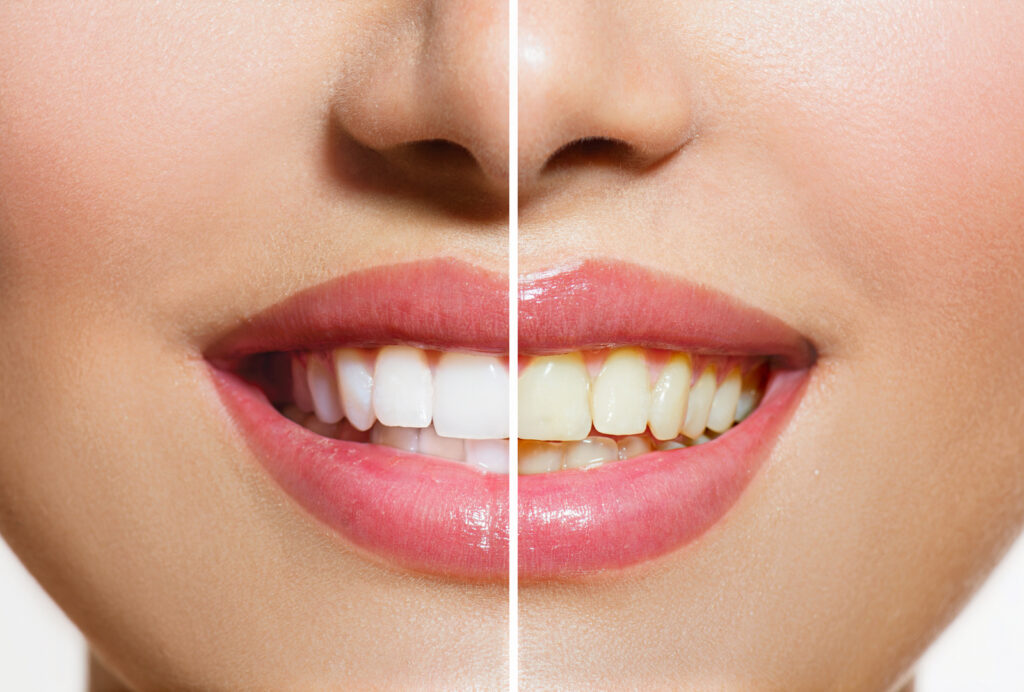
A dazzling, white smile is a universal symbol of beauty and confidence. If you’re looking to enhance your smile, tooth whitening is a popular and effective option. However, with the myriad of choices available, it’s essential to understand the various tooth-whitening options and how to achieve that brighter smile safely.
Understanding Tooth Discoloration
Before delving into tooth whitening methods, it’s crucial to understand why teeth become discolored in the first place. Common causes include:
- Diet: Consumption of dark-colored foods and beverages like coffee, tea, red wine, and berries can stain teeth over time.
- Tobacco Use: Smoking or chewing tobacco can lead to yellow or brown tooth discoloration.
- Aging: As we age, the outer enamel layer of teeth naturally thins, revealing the yellowish dentin beneath.
- Poor Oral Hygiene: Inadequate brushing and flossing can lead to plaque buildup, which can cause teeth to appear dull and discolored.
- Genetics: Some people may have naturally darker teeth due to genetics.
Tooth Whitening Options
When it comes to tooth whitening, there are several safe and effective options available:
1. Over-the-Counter (OTC) Whitening Products:
OTC products include whitening toothpaste, mouthwashes, and strips. They contain lower concentrations of whitening agents and can be used at home. While less potent than professional treatments, they can help maintain a whiter smile.
2. Professional In-Office Whitening:
In-office treatments are performed by a dentist and yield quick and dramatic results. The dentist applies a high-concentration whitening gel and may use light or laser to activate it. This method is ideal for those seeking rapid improvement.
3. Take-Home Whitening Kits:
Dentists provide custom-fitted trays and a professional-grade whitening gel for use at home. This option allows for gradual whitening over a few weeks and offers a balance between convenience and effectiveness.
4. Natural Remedies:
Some people opt for natural remedies like baking soda, activated charcoal, or hydrogen peroxide. While these methods may have some whitening effects, they can be abrasive and should be used cautiously.
Safety Considerations
Ensuring tooth whitening is safe is paramount. Here are some essential safety considerations:
1. Consult with a Dentist:
Before embarking on any tooth whitening journey, consult with a dentist to assess your oral health and discuss suitable options. They can recommend the most appropriate method and ensure you don’t have any underlying dental issues that need addressing first.
2. Follow Instructions:
Whether using OTC products or professional treatments, follow the instructions carefully. Overusing or misusing whitening products can lead to tooth sensitivity and enamel damage.
3. Avoid Overuse:
Whitening should be done in moderation. Frequent and excessive whitening can weaken enamel and make teeth more susceptible to staining.
4. Monitor for Sensitivity:
Tooth sensitivity is a common side effect of whitening. If you experience discomfort, discontinue use and consult your dentist.
5. Maintain Oral Hygiene:
Whitening should be part of an overall oral hygiene routine. Regular brushing, flossing, and dental check-ups are essential to keep your smile healthy and bright.
Conclusion
Tooth whitening options offer a safe and effective way to achieve a brighter, more confident smile. The key is to make informed choices, consult with a dentist, and prioritize safety throughout the process. With the right approach, you can enjoy the benefits of a whiter smile while preserving your dental health.




